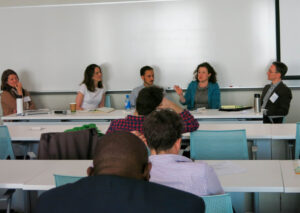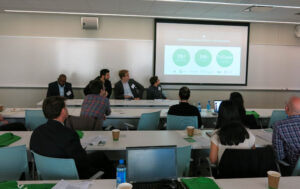The world is in the midst of a data explosion. This has the potential to transform cities in many ways by helping to plan for new transport infrastructure and urban growth, and better utilize existing infrastructure and services. Yet, many urban planning experts are finding that cities are not fully benefiting from these opportunities.
The old paradigm of data collection was focused on government as the main data collector. This has changed quickly. Today, exponentially more data is being collected by the private sector than any government, and public sector access to this data is not keeping pace.
“A big problem with how new data sources are being accessed is that everything is done in a one-off manner,” says Jacob Mason, Transport and Evaluation Manager with ITDP, “Each government that tries to get data from a company goes through a negotiation process that can take years and only applies to that particular city and company. At the same time, many in the public sector don’t understand the business perspective, where businesses are reluctant to share data that they’ve spent lots of time and money collecting. And many in both sectors are simply not aware of new tools that would help make the process much easier.”
In April, ITDP, with support from Microsoft, brought together international researchers and practitioners from both the public and private sectors to participate in an Innovative Data Symposium in San Francisco. The Symposium was an attempt to bridge this gap of understanding between sectors and chart a course of action towards better data in a much shorter time period.
Participants from companies including Lyft, Flowminder, Microsoft, and Toyota met with representatives from NACTO, SFMTA, the City of Vancouver, and the World Bank and many other government and NGO groups. They discussed public needs, private sector constraints, new research tools, and potential partnerships. Together, the participants presented their work, with the broader goal of thinking big about how to leverage data for the public good.
City officials described the need to have better information about how people move around the city, as well as better capacity to use data, especially in lower-income communities. They also highlighted the need for better coordination and data standardization within governments. Representatives from the private sector described their constraints to sharing data, particularly with the concern of maintaining a competitive edge.
Researchers presented new tools for accessing data, including scraping publicly available information and using algorithms to ask supervised questions of datasets in a secure manner. Other tools presented include ways to combine and process data from a variety of sources to turn it into useful information, such as combining census data with satellite images of nighttime lights to better understand where people live.
“With origin and destination information, we can see patterns of where people are going. With speed and derived mode data, we can see how they travel. Previously, collecting this information required either expensive unreliable and infrequent surveys, or physically having a person sit on the street and count people, which was also time consuming, expensive, infrequent, and hard to cover an entire city effectively”, says Mason. “With better data, we can start to precisely identify problem locations in the transport network. With frequently updated data, we can quickly assess the impact of a project, such as if a BRT system has actually reduced travel times, for example, without relying on subjective surveys.”
The issue of security was also a focus. Much raw data is highly sensitive and is stored securely to respect privacy and business interests. Researchers at the symposium are developing tools to ensure confidentiality by creating a sufficient level of aggregation. This aggregate data can help cities assess progress, identify issues, and plan accordingly in order to create better, more efficient transit options for their citizens, while protecting individual privacy, and allowing businesses to thrive.
ITDP’s next step is looking to identify cities that have taken proactive steps to better leverage data for decision making, and to develop guidelines for how this might be replicated elsewhere. This includes exploring the notion of “street neutrality”, akin to net neutrality but for data generated via publicly controlled streets. Improving data literacy is another key in better leveraging data, so that governments have the ability to translate information into useful decisions. The group is also looking to create new pilot projects of partnerships across sectors to align interests, and demonstrate new ways of leveraging data.




